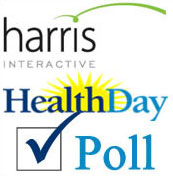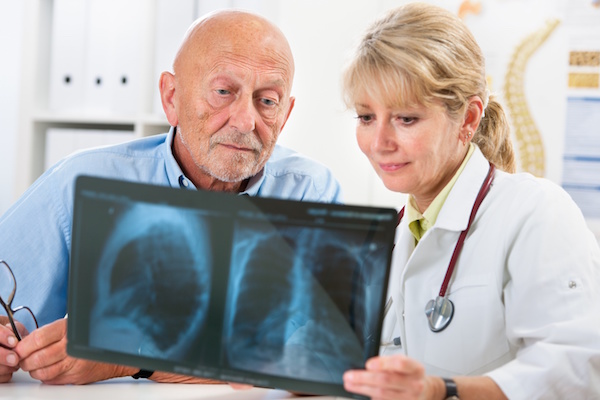
WEDNESDAY, Aug. 14 (HealthDay News) — After hearing about film star Angelina Jolie’s double mastectomy, a growing number of U.S. women now say they may ask their doctors whether the same preventive measure is right for them, according to a new Harris Interactive/HealthDay poll.
The survey of nearly 1,100 U.S. women, conducted in mid-July, found that almost all women (86 percent) had heard of Jolie’s double mastectomy. And 5 percent of those women said they would seek medical advice on having a preventive mastectomy or ovary removal because of Jolie’s decision.
That may seem like a small percentage, but it translates to about 6 million women nationwide, noted Harris Poll chairman Humphrey Taylor.
“The survey finds that the news of Angelina Jolie’s double mastectomy has had an impact on many American women,” Taylor said.
Back in May, Jolie announced that she had undergone a double mastectomy and also planned to have her ovaries removed, after learning that she carried a gene mutation linked to breast and ovarian cancers.
Jolie, 38, carries a mutation in a gene called BRCA1. According to the American Cancer Society, defects in that gene and another, called BRCA2, substantially raise a woman’s lifetime risks of breast and ovarian cancers — to a roughly 60 percent chance of developing breast cancer, and a 15 to 40 percent risk of ovarian cancer.
By comparison, the average U.S. woman has a 12 percent chance of being diagnosed with breast cancer over her lifetime, and only a 1.4 percent risk of ovarian cancer.
Experts stress that most breast cancers are not inherited, and gene mutations — mainly in the BRCA genes — account for only about 5 to 10 percent of all breast cancers.
And while many women in the new survey might have been interested in BRCA gene testing, most do not need it, experts said.
“Genetic testing is only recommended for women at high risk,” said Debbie Saslow, director of breast and gynecologic cancer for the American Cancer Society in Atlanta.
Women at high risk either have a personal history or a strong family history of breast or ovarian cancers, and the survey found that interest in getting the gene test was somewhat higher among women who felt they had a family history of breast cancer versus those who did not have such histories.
“Strong” family history involves a number of factors, Saslow said, including the age at which relatives were diagnosed.
For example, “if your grandmother was diagnosed with breast cancer at the age of 70, that’s not a reason to have genetic testing,” Saslow said.
Certain other family history patterns, though, are linked to a higher risk of carrying a cancer-linked BRCA mutation. Some of those include having two first-degree relatives with breast cancer, one of whom was diagnosed at age 50 or younger; a first-degree relative with cancer in both breasts; or two or more relatives with ovarian cancer at any age.
Your doctor, Saslow said, should take a thorough family history — which means you need to know about any breast or ovarian cancers on both sides of your family. If that raises a red flag, your doctor should refer you to a genetic counselor to see if BRCA testing is a good idea, Saslow said.
Cassie Connerty is a physicians’ assistant who counsels women at the High-Risk Breast Clinic at Scott & White Hospital in Round Rock, Texas. She said she has not noticed an upswing in women seeking counseling since Jolie’s story became public.
But she said she did seem to get more questions from primary care doctors in her health system. “It may have heightened their awareness of the issue,” Connerty said.
The cost of a BRCA test, at around $4,000, could deter some women. Insurance plans often cover the test if it’s recommended by a health provider — but even then, Connerty said, women may have a steep co-pay.
In the survey, one-third of the women said they would “very likely” have a BRCA test if it were fully covered by insurance. Only 2 percent said they would if they had to foot the bill.
If testing is advised, and insurance pays for it, the challenges do not stop there, Saslow pointed out.
Ideally, the youngest person in the family who already has breast or ovarian cancer would be tested. If there’s a BRCA mutation, other women in the family can then be tested for that same mutation.
“Depending on your family dynamic, it can be complicated to get a relative to undergo testing,” Saslow said.
Of women who do undergo BRCA testing, only a small percentage are found to have a mutation, Connerty said. But they are still at greater-than-average risk of cancer. “Your risk factors don’t go away,” Connerty said.
Some of those women might be candidates for drug therapy with tamoxifen or raloxifene, to reduce their risk of developing breast cancer.
For women who do have a BRCA mutation, double mastectomy is not the only option. Some women may opt to take drugs that help lower their cancer risk, while others may opt for intensive breast cancer screening.
Saslow said that screening for these high-risk women should include mammograms and MRI scans, and be done at least once a year. (Some experts suggest alternating between mammograms and MRI every six months; some suggest doing both tests at the same time, once a year.)
“A lot of women don’t choose a mastectomy,” Saslow said.
In general, experts say women with BRCA mutations should have their ovaries removed by age 40, because there is no way to detect ovarian cancer early. And that surgery, Saslow noted, also helps cut a woman’s breast cancer risk, because removing the ovaries takes away the body’s main source of estrogen. Estrogen has long been tied to increased breast cancer risk.
Connerty said it’s important for women to know that there are options after a positive BRCA test result. “Once you know you’re positive,” she said, “there are things we can do to hopefully prevent cancer, or at least catch it early.”
More information
There’s more on breast cancer risk factors at the American Cancer Society.
For more on the poll results, visit Harris Interactive.
Copyright © 2025 HealthDay. All rights reserved.

